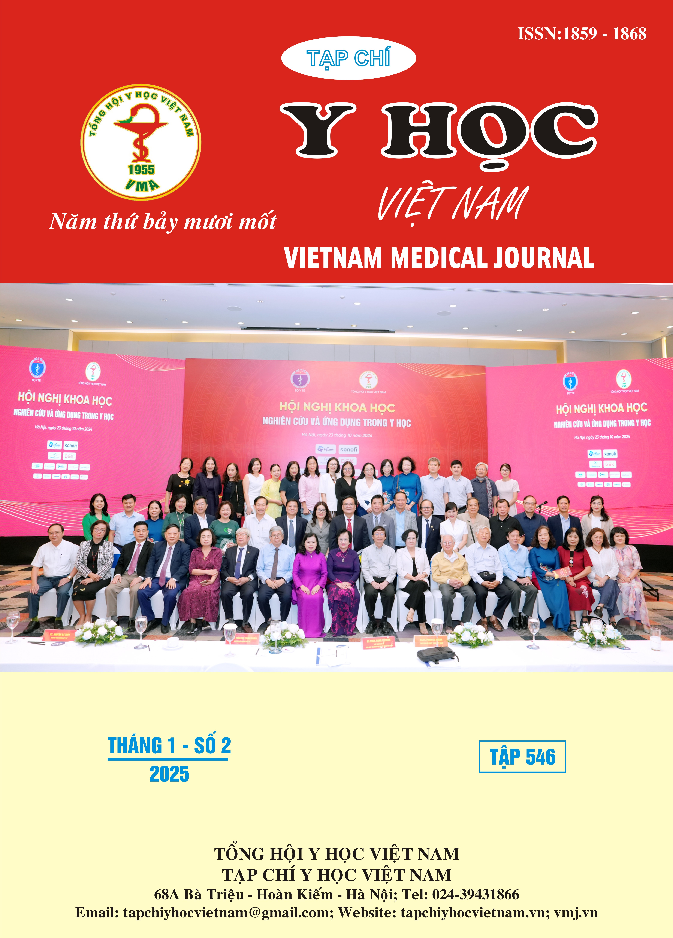EFFECTIVENESS OF ULTRASOUND-GUIDED INTERNAL JUGULAR VEIN CATHETERIZATION WITH CHEMOPORT PLACEMENT IN PEDIATRIC PATIENTS
Main Article Content
Abstract
Objective: To evaluate the effectiveness of ultrasound-guided internal jugular vein catheterization with subcutaneous chemoport placement in pediatric patients. Methods: This cross-sectional study enrolled 32 children (1-14 years) undergoing general anesthesia for subcutaneous chemotherapy port placement. Ultrasound-guided internal jugular vein catheterization was performed with subcutaneous tunneling to the port (1.5-3.0 cm below ipsilateral clavicle). The study outcomes included success rate and complications. Results: The overall and first-attempt success rates were 96.9% and 90.6% respectively, with a mean procedure time of 5.9±1.8 minutes. First-attempt success rates varied significantly with cervical lymphadenopathy (p<0.05). Complications occurred in 6.3% of cases, including one subcutaneous hematoma and one catheter-related infection, with rates differing between first-attempt success and failure (p<0.05). Conclusion: Ultrasound-guided internal jugular vein catheterization connected to chemoport in pediatric patients demonstrates high success rates and low complication rates. Ultrasound guidance enables direct visualization of vascular anatomy and needle trajectory, improving safety and efficacy.
Article Details
Keywords
internal jugular vein catheterization, chemoport, ultrasound, pediatric
References
2. Yu C, Yu W, Tianqing G et al (2024). Systematic review of ultrasound-guided central venous catheter placement-related complications in neonates and infants aged <12 months. J Int Med Res;52(10):3000605241287168.
3. Christine SL, Ronald SC (2016). Ultrasound-guided central venous catheter placement increases success rates in pediatric patients: a meta-analysis. Pediatr Res;80(2):178-84.
4. Ceyhan S, Seher E, Mehmet A (2021). Evaluating the Efficacy of Ultrasonography Guidance in Pediatric Intensive Care Unit Patients with Central Vein Catheter. Haydarpasa Numune Med J; 61(1):117-121.
5. Murtaza AG, Sidra S, Muhammad S, et al (2022). Safety and efficacy of ultrasound-guided central venous catheter insertion in critically ill children. Professional Med J; 29(04):491-494.
6. Leung J, Duffy M, Finckh A (2006). Real-time ultrasonographically-guided internal jugular vein catheterization in the emergency department increases success rates and reduces complications: a randomized, prospective study. Ann Emerg Med;48(5):540-7.
7. Galina L, David GT, Elizabeth R et al (2005). Utility of ultrasound-guided central venous cannulation in pediatric surgical patients: a clinical series. Paediatr Anaesth;15(11):953-8.


